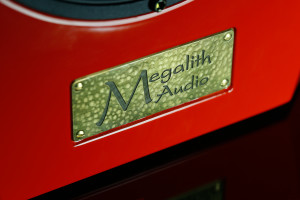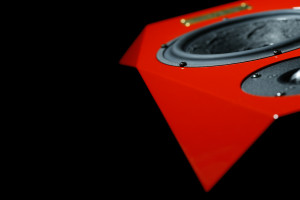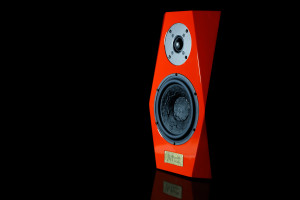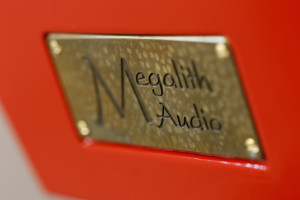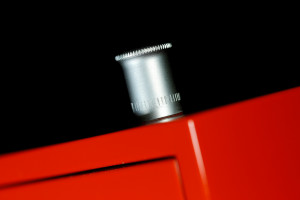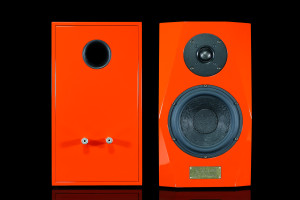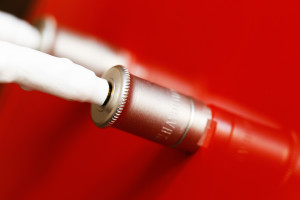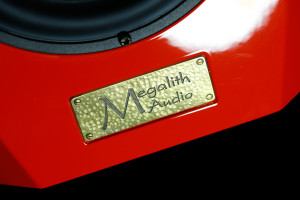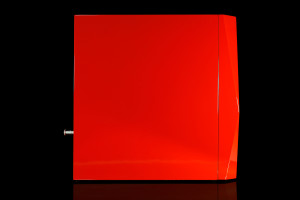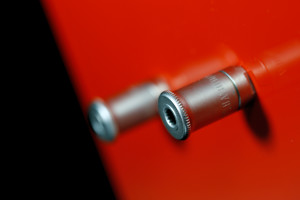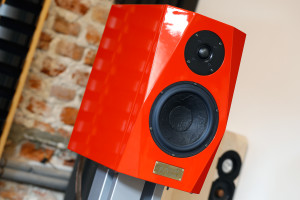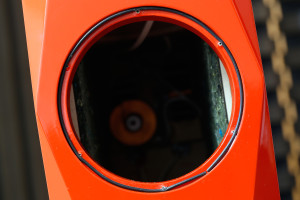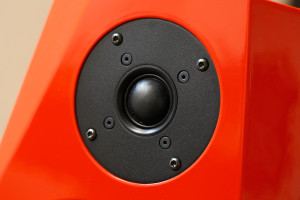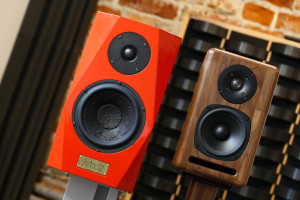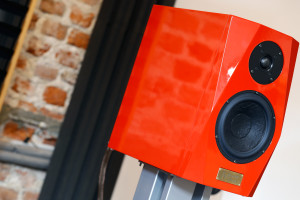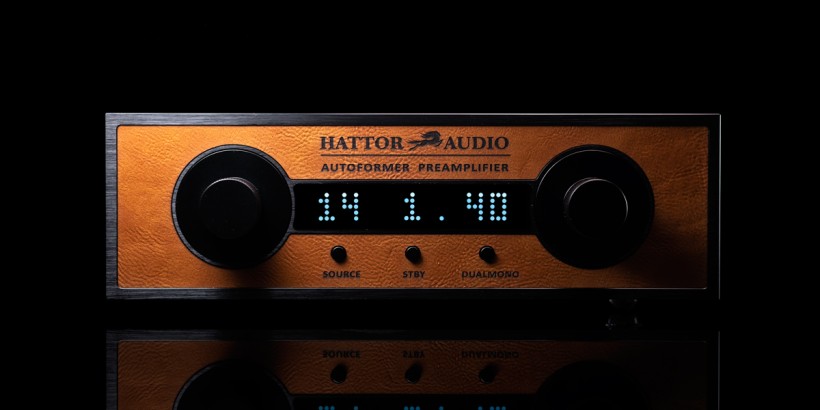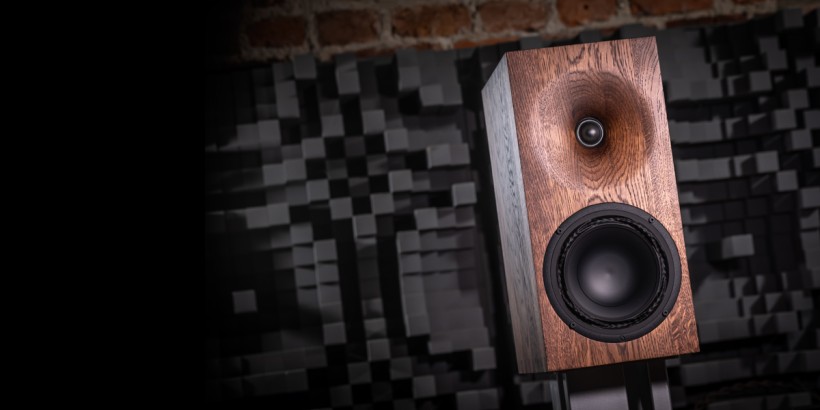There’s a valid reason to pay attention to small audio manufactures. One never knows when a real gem discovery is right around the corner. Most of worldwide famous brands started in DIY alike fashion. And that’s why in this review the light is shed on Polish Megalith Audio company. It had its debut on the Audio Video Show in 2016, many enthusiasts say that a rather successful one. In any case, Megalith Audio SCX monitors are this review’s main dish. Enjoy!
Introduction
Picture two persons: a customer (Piotr Panfic) and a seller (Hubert Małyszek). A while ago, the former left the money in the latter’s hands, an amplifier needed for his work is what he got in return. Eventually, guys started talking about non-business related matters and it turned out that Mr Panfic was into DIY speakers as a hobby thing, these were sold solely to his friends. The meeting happened in our constructor’s place. Once the music started, his new to the audio game guest was simply blown away and the question was asked in the process. “When are you going to go professional with said hobbyist activity?”. The answer was short: “Maybe one day…”. “No mate, let’s do this together ASAP!” is what Piotr got in return. And that’s how Megalith Audio manufacture was born. It seems that this gent needed a small spark. In any case, in October 2016 this company became operational, yet the constructor is into speakers for 20 years or so. Past the initial evaluation, the thought that his SCX monitors have to be brought to broader attention appeared rather quickly. This is our starting point.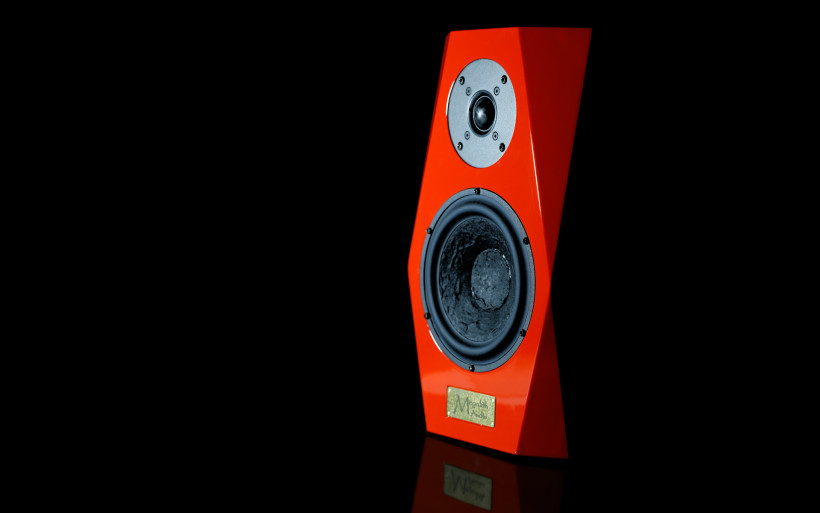 This scribe mentioned many times, that it’s tough out there on the audio market for newcomers. The competition is fierce and numerous. And if one doesn’t do something new/fresh/spectacular, the road ahead is probably going to be very bumpy. Megalith Audio speakers don’t stand out of the crowd, that’s easily seen. One might think that this Polish operation does very similar and not particularly innovative products in comparison to other small manufactures just gone official. That’s the initial impression, but past the very first glimpse at its portfolio, some obvious things start to flesh out. It’s not about innovation, but execution. Bold statement? Perhaps so, but rest assured we’ll get to the bottom of this shortly.
This scribe mentioned many times, that it’s tough out there on the audio market for newcomers. The competition is fierce and numerous. And if one doesn’t do something new/fresh/spectacular, the road ahead is probably going to be very bumpy. Megalith Audio speakers don’t stand out of the crowd, that’s easily seen. One might think that this Polish operation does very similar and not particularly innovative products in comparison to other small manufactures just gone official. That’s the initial impression, but past the very first glimpse at its portfolio, some obvious things start to flesh out. It’s not about innovation, but execution. Bold statement? Perhaps so, but rest assured we’ll get to the bottom of this shortly. A quick look at Megalith Audio portfolio easily shows that this is a newcomer. Four products in total is the complete offering. Three of which are floorstanders, complemented by one monitor known as SCX, that’s our hero this time. Said manufacturer’s pricing is competitive in the majority of European countries, on the contrary to Poland. Here most of these products would be considered as either expensive or very expensive. Hence this English writing is in order. SCX monitor is the most affordable model, its asking is €2’499/pr and CX, PX and top-of-the-line GX floorstanders can be bought for €3’999/pr ,€4’999/pr and €8’799/pr respectively. Now let’s get back to SCX and see what this product is all about.
A quick look at Megalith Audio portfolio easily shows that this is a newcomer. Four products in total is the complete offering. Three of which are floorstanders, complemented by one monitor known as SCX, that’s our hero this time. Said manufacturer’s pricing is competitive in the majority of European countries, on the contrary to Poland. Here most of these products would be considered as either expensive or very expensive. Hence this English writing is in order. SCX monitor is the most affordable model, its asking is €2’499/pr and CX, PX and top-of-the-line GX floorstanders can be bought for €3’999/pr ,€4’999/pr and €8’799/pr respectively. Now let’s get back to SCX and see what this product is all about.
Build
Megalith Audio SCX is a two-way, bass-reflex vented design. Make no mistake here, this is big and heavy monitor. Just take a look at the pictures, Xavian Perla is literally dwarfed by this red giant, also available in many veneers and RAL palette colour of choice. SCX model weighs 17 kilograms per piece and measures (W x D x H) 20 x 40 x 40 cm. It’s not small at all, rather slightly intimidating in this regard. The initial thought is that it looks like one able to deliver proper bass response without any subwoofer addition. And yes, this isn’t wishful thinking, we’ll discuss this matter in the sound chapter. For now let me just say that SCX is very capable downstairs.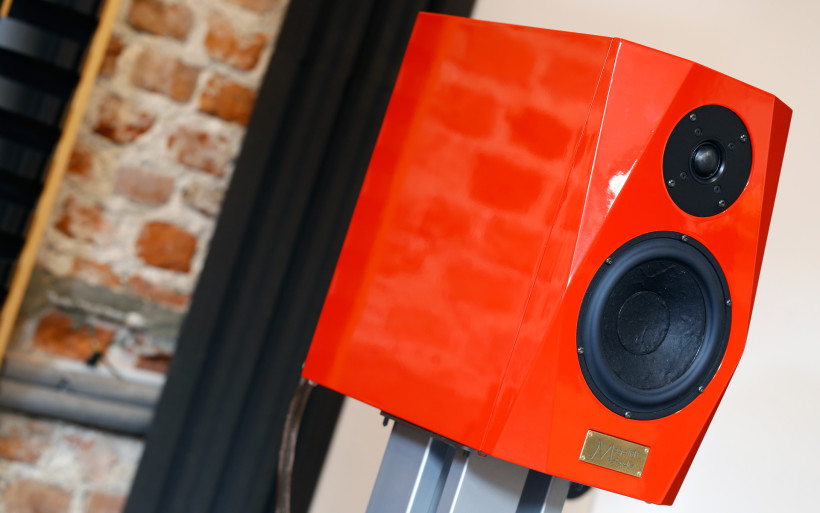 Moving on, Polish monitors’ specs are as follows; 7 ohms of nominal impedance, power handling of 80W, 86 dB of sensitivity, crossing point at 3 200 Hz and 38 – 20 000 Hz frequency response seals the deal. Nothing out of ordinary, eh? So where’s the angle? As far as abovementioned execution goes, Megalith Audio guys decided to make their speakers solely out of what they consider as premium components. And rightfully so, picture WBT terminals, Scan-Speak and SB Acoustics drivers, inner cabling by QED and passive crossover components by Jantzen, Mundorf, SCR and Intertechnik. Good enough for €2’499? This of course doesn’t mean that the outcome will be mindblowing soundwise. Though in this price range to see this kind of parts is a very nice sight nonetheless. But that’s not the whole story just yet.
Moving on, Polish monitors’ specs are as follows; 7 ohms of nominal impedance, power handling of 80W, 86 dB of sensitivity, crossing point at 3 200 Hz and 38 – 20 000 Hz frequency response seals the deal. Nothing out of ordinary, eh? So where’s the angle? As far as abovementioned execution goes, Megalith Audio guys decided to make their speakers solely out of what they consider as premium components. And rightfully so, picture WBT terminals, Scan-Speak and SB Acoustics drivers, inner cabling by QED and passive crossover components by Jantzen, Mundorf, SCR and Intertechnik. Good enough for €2’499? This of course doesn’t mean that the outcome will be mindblowing soundwise. Though in this price range to see this kind of parts is a very nice sight nonetheless. But that’s not the whole story just yet. Megalith Audio SCX not only looks, but also feels massive, solid as a rock. MDF based enclosure might look quite vanilla-flavored, but there’s more to it past the first impression. First of all, it’s exceptionally well-assembled. Someone knows what he’s doing. The front plate is presumably glued to the rest, yet the connection between these elements is even all across the board and 1 mm gap is maintained no matter where one looks. To pull this outcome off requires certain skills and – above all else – great attention to details. The product’s front is cut in four places, which adds a bit sharpness, speed, uniqueness and personality to its look. When asked whether was there an option to make SCX’s looks even more individual and standing out of the crowd, a simple reply was given. Each speakers’ enclosure fancier than what’s available now, is a difficult and costly task at the moment. The people behind SCX project are aware that their products have to be even more distinctive than currently, yet the retail price would unavoidably go up and in a very obvious way. Hence for now it is what it is. But what actually is, is good nonetheless. They do their own carpentry, both paint job and veneering are outsourced.
Megalith Audio SCX not only looks, but also feels massive, solid as a rock. MDF based enclosure might look quite vanilla-flavored, but there’s more to it past the first impression. First of all, it’s exceptionally well-assembled. Someone knows what he’s doing. The front plate is presumably glued to the rest, yet the connection between these elements is even all across the board and 1 mm gap is maintained no matter where one looks. To pull this outcome off requires certain skills and – above all else – great attention to details. The product’s front is cut in four places, which adds a bit sharpness, speed, uniqueness and personality to its look. When asked whether was there an option to make SCX’s looks even more individual and standing out of the crowd, a simple reply was given. Each speakers’ enclosure fancier than what’s available now, is a difficult and costly task at the moment. The people behind SCX project are aware that their products have to be even more distinctive than currently, yet the retail price would unavoidably go up and in a very obvious way. Hence for now it is what it is. But what actually is, is good nonetheless. They do their own carpentry, both paint job and veneering are outsourced.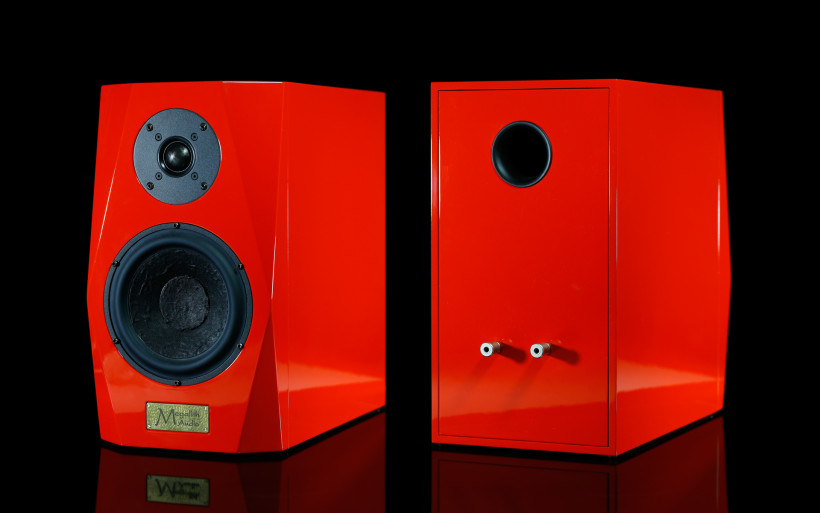 Since we’re at the materials stop, three out of four models in Megalith Audio offering are MDF based, the most expensive one – GX – has wooden enclosure. Fair enough, yes? But again, the devil is in the detail. How so, you ask? Well, SCX’s enclosure is exceptionally stiff and thick. Its front is a 5 cm deep piece, which is very unusual in sub €3’000 price range and the rest of the box (3 cm thick) isn’t too far off either. The damping is generous. Piotr is very happy with three-layered sandwich made out of ceramic plates, bitumen mat and felt. Apparently ScanSpeak Classic 18W/8545-01 7″ transducers need this kind of treatment. And let’s just add that each of these drivers cost $170 in retail. This figure times two gives us $340. Now how many speakers from SCX shelf sport this kind of semi-parts?
Since we’re at the materials stop, three out of four models in Megalith Audio offering are MDF based, the most expensive one – GX – has wooden enclosure. Fair enough, yes? But again, the devil is in the detail. How so, you ask? Well, SCX’s enclosure is exceptionally stiff and thick. Its front is a 5 cm deep piece, which is very unusual in sub €3’000 price range and the rest of the box (3 cm thick) isn’t too far off either. The damping is generous. Piotr is very happy with three-layered sandwich made out of ceramic plates, bitumen mat and felt. Apparently ScanSpeak Classic 18W/8545-01 7″ transducers need this kind of treatment. And let’s just add that each of these drivers cost $170 in retail. This figure times two gives us $340. Now how many speakers from SCX shelf sport this kind of semi-parts?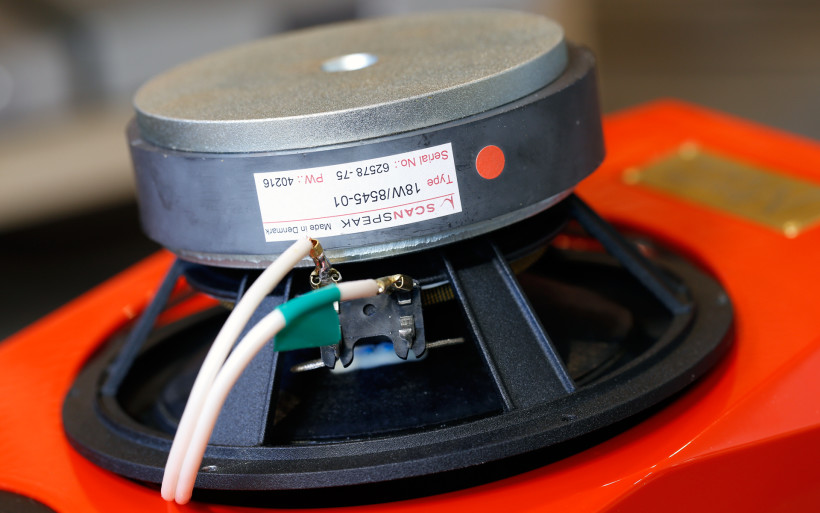 Sadly I couldn’t see what tweeters exactly are used, as these have been glued to the enclosure. But it’s seen that Scan-Speak’s Classic series loaded with textile domes was Piotrek’s choice. Again, that’s $300+ for two drivers. Both mid-woofer and tweeter work in the same chamber. Passive crossover in each is based on Butterworth’s 2nd order filtering, mounted on the rear, covered in foam and assembled in good ‘ol point-to-point fashion. The components used internally are both seen on the pictures and correct with the manufacturer’s statements. The soldering job is a bit sloppy, though this scribe’s eyes have seen much worse. The model delivered was the demo unit, hence it missed i.e. back plate with serial number, QC check and +/- writings. The former is always the one on the right side.
Sadly I couldn’t see what tweeters exactly are used, as these have been glued to the enclosure. But it’s seen that Scan-Speak’s Classic series loaded with textile domes was Piotrek’s choice. Again, that’s $300+ for two drivers. Both mid-woofer and tweeter work in the same chamber. Passive crossover in each is based on Butterworth’s 2nd order filtering, mounted on the rear, covered in foam and assembled in good ‘ol point-to-point fashion. The components used internally are both seen on the pictures and correct with the manufacturer’s statements. The soldering job is a bit sloppy, though this scribe’s eyes have seen much worse. The model delivered was the demo unit, hence it missed i.e. back plate with serial number, QC check and +/- writings. The former is always the one on the right side.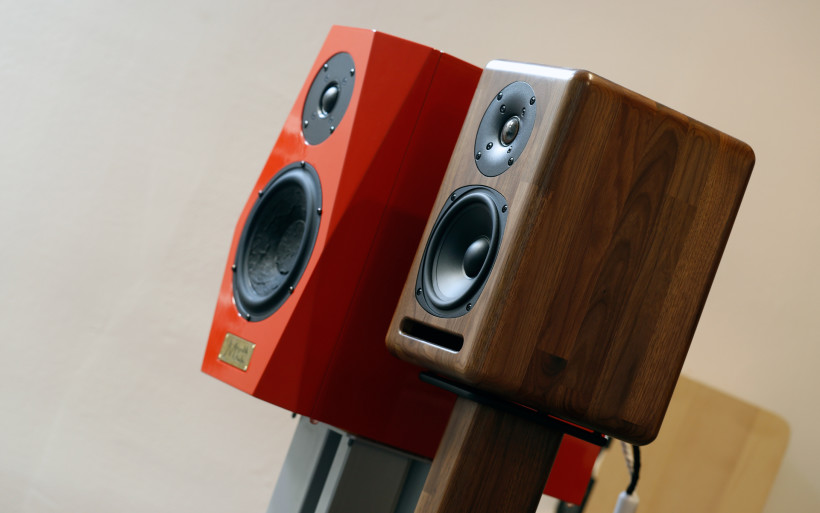 Usually this writer’s main goal is the performance. But in case of Megalith Audio, several statements had to be checked out. Fit-n-finish and parts’ quality are both on a very high level already. Things are dandy here, no questions asked. It’s important as this is Piotr’s way of stirring the market. He doesn’t reinvent, but obviously pays great attention to details. No artsy-fartsy additions/innovations are needed, on the contrary to decent execution. Good semi-parts connected in the right way are the key. He knows that, this is his mindset. And now is the time to verify whether SCX is up to the snuff performance wise too.
Usually this writer’s main goal is the performance. But in case of Megalith Audio, several statements had to be checked out. Fit-n-finish and parts’ quality are both on a very high level already. Things are dandy here, no questions asked. It’s important as this is Piotr’s way of stirring the market. He doesn’t reinvent, but obviously pays great attention to details. No artsy-fartsy additions/innovations are needed, on the contrary to decent execution. Good semi-parts connected in the right way are the key. He knows that, this is his mindset. And now is the time to verify whether SCX is up to the snuff performance wise too.
Sound
In order to properly review Megalith Audio SCX, similarly priced Xavian Perla monitors were used. Trilogy 925 integrated and Sanders Sound Systems two-piece combo were suitable for the job. As per usual, LampizatOr Golden Gate (Psvane WE-101D + KR Audio 5U4G Ltd. Ed.) handled source duties. Asus UX305LA and Lumin T1 were used as transports, the latter was controlled via iPad Air loaded with dedicated Lumin app.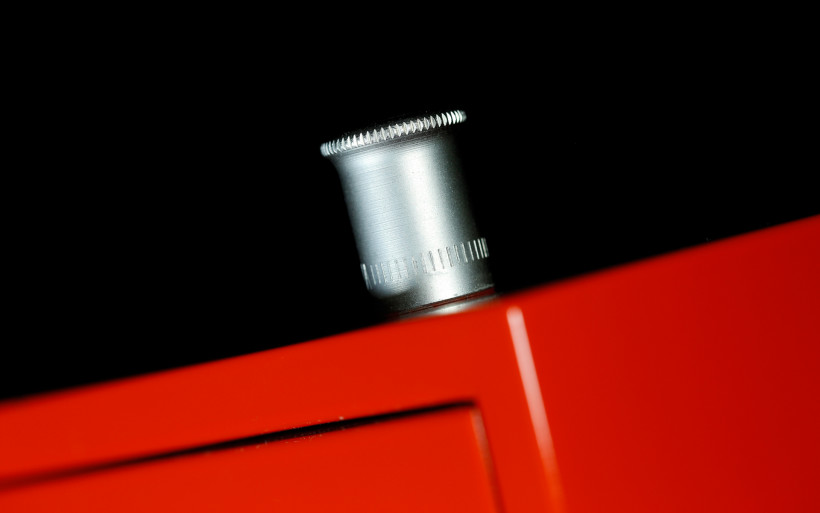 SCX monitors’ build indicates several things. Some of these are pure guessing game and nothing above that. Let’s start with the size. The product is big and to follow in that vein… perhaps the sound will be enormous as well? On the other hand, monitor alike product and earth-shattering bass? Highly unlikely, but perhaps? OK, here the guessing stops, onto drivers we go. Tweeter sports soft dome and dried paper (with carbon fiber cone) is easily spotted on mid-woofer. Tender materials, hence elevated texturing, sharpness-free attitude and somewhat slower approach are on the table? To a degree it’s reasonable to think that this might be the case. In short, not only most of these presumptions are quite accurate, but also clearly indicate which sound Megalith Audio guys fancy.
SCX monitors’ build indicates several things. Some of these are pure guessing game and nothing above that. Let’s start with the size. The product is big and to follow in that vein… perhaps the sound will be enormous as well? On the other hand, monitor alike product and earth-shattering bass? Highly unlikely, but perhaps? OK, here the guessing stops, onto drivers we go. Tweeter sports soft dome and dried paper (with carbon fiber cone) is easily spotted on mid-woofer. Tender materials, hence elevated texturing, sharpness-free attitude and somewhat slower approach are on the table? To a degree it’s reasonable to think that this might be the case. In short, not only most of these presumptions are quite accurate, but also clearly indicate which sound Megalith Audio guys fancy. Polish monitors sound ballsy above all else. In their case in particular, along with big boxes impressively big sound comes. SCX ‘puppies’ don’t hide behind corners, oh no. When these are on, firm, strong and confident performance is something a listener can be sure of. It’s safe to say that sound of this sort is in a way a bit showy. Yet it’s also heard that this doesn’t happen constantly. Polish monitors can be suave performers, though not every recording is capable of showing it.
Polish monitors sound ballsy above all else. In their case in particular, along with big boxes impressively big sound comes. SCX ‘puppies’ don’t hide behind corners, oh no. When these are on, firm, strong and confident performance is something a listener can be sure of. It’s safe to say that sound of this sort is in a way a bit showy. Yet it’s also heard that this doesn’t happen constantly. Polish monitors can be suave performers, though not every recording is capable of showing it. Megalith Audio SCX’s attitude is very fun-giving. In terms of tonal balance and judging by my own pair of ears, this translates to slightly weakened midrange and a bit elevated border frequencies. Picture V-shaped FR chart or something along these lines, yet these bumps and holes are minor. To many people this would seem as fairly equal tonal balance. Moving on, SCX’s bass is surprisingly present. Agile, well-bodied and differentiated, yet never bloated, dull or acting like a veil for what’s above. Lack of overbearing midbas elevation is considered as a plus. During feisty and drums heavy tracks of Kodo’s “Daraijin” sort, the punch is wonderful. Proper crack appears when really needed and the sense of bandwidth shortage simply isn’t there. Downstairs department is perfectly controlled as a package. Its interaction with my own four walls was very solid, not even once boominess was present. Subjectively, its edginess-to-texturing ratio was a spot-on as well. Bloody good job!
Megalith Audio SCX’s attitude is very fun-giving. In terms of tonal balance and judging by my own pair of ears, this translates to slightly weakened midrange and a bit elevated border frequencies. Picture V-shaped FR chart or something along these lines, yet these bumps and holes are minor. To many people this would seem as fairly equal tonal balance. Moving on, SCX’s bass is surprisingly present. Agile, well-bodied and differentiated, yet never bloated, dull or acting like a veil for what’s above. Lack of overbearing midbas elevation is considered as a plus. During feisty and drums heavy tracks of Kodo’s “Daraijin” sort, the punch is wonderful. Proper crack appears when really needed and the sense of bandwidth shortage simply isn’t there. Downstairs department is perfectly controlled as a package. Its interaction with my own four walls was very solid, not even once boominess was present. Subjectively, its edginess-to-texturing ratio was a spot-on as well. Bloody good job! Mid FR part was different, SCX’s showiness was tamed. More emphasis was put on naturalness and calmness. Every instrument had slightly soft, yet still well-pronounced character. Again, a bull’s-eye in terms of texturing and pure joy factor. Usually a manufacturer has to compromise somewhere. Weakened bass, yet something else elevated or vice versa scenario. Yet this time that wasn’t the case. SCX’s midrange was subjectively pleasant and up there with the rest. And since we’re at FR dissection stop, the same story was with upstairs department. It sounded very mildly bumped, yet still calm and not too shiny. Proper decay and weigh were on. If dark Xavian monitors we’d put on one side of the spectrum and improperly amplified, therefore heavily lit-up Voxativ Zeth on the other, SCX would have it’s place somewhere in the middle. The detail retrieval is quite good and served in fatigue-free fashion. When all these pieces are connected together, it’s quite impressive how well-applied (or sewn together) both drivers of this review’s hero are. It’s safe to say at this point that Scan-Speak’s Classic duo is free from FR holes and coherence is the natural outcome.
Mid FR part was different, SCX’s showiness was tamed. More emphasis was put on naturalness and calmness. Every instrument had slightly soft, yet still well-pronounced character. Again, a bull’s-eye in terms of texturing and pure joy factor. Usually a manufacturer has to compromise somewhere. Weakened bass, yet something else elevated or vice versa scenario. Yet this time that wasn’t the case. SCX’s midrange was subjectively pleasant and up there with the rest. And since we’re at FR dissection stop, the same story was with upstairs department. It sounded very mildly bumped, yet still calm and not too shiny. Proper decay and weigh were on. If dark Xavian monitors we’d put on one side of the spectrum and improperly amplified, therefore heavily lit-up Voxativ Zeth on the other, SCX would have it’s place somewhere in the middle. The detail retrieval is quite good and served in fatigue-free fashion. When all these pieces are connected together, it’s quite impressive how well-applied (or sewn together) both drivers of this review’s hero are. It’s safe to say at this point that Scan-Speak’s Classic duo is free from FR holes and coherence is the natural outcome. The description above suggests that what we’re dealing here this time is smooth, coherent and even performer. And if it wasn’t for the soundstage, that’d be the case. Yet imaging and outright big sound in general is what makes it all click. The manufacturer suggests that SCX is meant to work with spaces of 25 sq. meters and below. Past rather extensive testing phase I tend to think that these will be perfectly viable in larger places too. At least if one isn’t solely after huge bass response. The gist is that my listening room was instantly filled with sound, no questions asked. And the louder the music was, the better the effect I got in return. Because of its inherent features, SCX isn’t fussy about the repertoire, these monitors will handle everything. “Drones” album by Muse proved the point in an outstanding fashion and the same story was with old AC/DC, Mike Oldfield, Michael Godard, Kodo, Wardruna, Trent Reznor’s earlier work, Queen, Fever Ray, Mari Boine and everything else that was on the playlist. 80 dB+ SPL turned out to be my personal sweet spot with our monitors, even though on a daily basis lower volume is what I’m used to. But again, with these Polish performers it was difficult to restrain oneself and not to rock properly in the process. Hence past some point no attention to this detail was given and I did what I pleased. This time around, loud listening levels = joy was the equation already solved.
The description above suggests that what we’re dealing here this time is smooth, coherent and even performer. And if it wasn’t for the soundstage, that’d be the case. Yet imaging and outright big sound in general is what makes it all click. The manufacturer suggests that SCX is meant to work with spaces of 25 sq. meters and below. Past rather extensive testing phase I tend to think that these will be perfectly viable in larger places too. At least if one isn’t solely after huge bass response. The gist is that my listening room was instantly filled with sound, no questions asked. And the louder the music was, the better the effect I got in return. Because of its inherent features, SCX isn’t fussy about the repertoire, these monitors will handle everything. “Drones” album by Muse proved the point in an outstanding fashion and the same story was with old AC/DC, Mike Oldfield, Michael Godard, Kodo, Wardruna, Trent Reznor’s earlier work, Queen, Fever Ray, Mari Boine and everything else that was on the playlist. 80 dB+ SPL turned out to be my personal sweet spot with our monitors, even though on a daily basis lower volume is what I’m used to. But again, with these Polish performers it was difficult to restrain oneself and not to rock properly in the process. Hence past some point no attention to this detail was given and I did what I pleased. This time around, loud listening levels = joy was the equation already solved. Getting back to the soundstage, it was generous in terms of width and depth, though the last dimension – height – was usually slightly smaller. The main image was between the speakers and a bit withdrawn. Also it’s worth to know that SCX won’t completely disappear from the room. Past two day long tryout, 1 and 1,5 meters were given to side- and back wall respectively. In the audition room there was no space for additional tinkering. But the gist is that what was served was impressive. And by abovementioned big sound one should understand large, threedimensional, quite dense and properly separated instruments. Not glued one to another, but with ‘visible’ air between ’em and generous shove. At times, the outcome was simply spectacular.
Getting back to the soundstage, it was generous in terms of width and depth, though the last dimension – height – was usually slightly smaller. The main image was between the speakers and a bit withdrawn. Also it’s worth to know that SCX won’t completely disappear from the room. Past two day long tryout, 1 and 1,5 meters were given to side- and back wall respectively. In the audition room there was no space for additional tinkering. But the gist is that what was served was impressive. And by abovementioned big sound one should understand large, threedimensional, quite dense and properly separated instruments. Not glued one to another, but with ‘visible’ air between ’em and generous shove. At times, the outcome was simply spectacular. Now is the time to answer where SCX is underperforming. Although the soundstage as a whole is generous and of quality, additional layering could be fleshed out, this surely would elevate the experience. And though these speakers are smooth and quite informative in general, in terms of sheer resolution and organics, things can be audibly better. These aren’t bottlenecking factors though, just ones a bit below the rest. And that’s perfectly fine, one can’t have everything for less than €3’000. As a package, Megalith Audio SCX defends itself, that’s the most important thing. I’m confident to say that every newcomer will be blown away by its performance. Vets used to higher quality audio will be at least surprised how coherent and effortless it sounds.
Now is the time to answer where SCX is underperforming. Although the soundstage as a whole is generous and of quality, additional layering could be fleshed out, this surely would elevate the experience. And though these speakers are smooth and quite informative in general, in terms of sheer resolution and organics, things can be audibly better. These aren’t bottlenecking factors though, just ones a bit below the rest. And that’s perfectly fine, one can’t have everything for less than €3’000. As a package, Megalith Audio SCX defends itself, that’s the most important thing. I’m confident to say that every newcomer will be blown away by its performance. Vets used to higher quality audio will be at least surprised how coherent and effortless it sounds. And lastly, one comparison is in order. And some gear swaps on top of that. Xavian Perla monitors are darker and sound smaller, intimacy and mid-centric performance are their main trading cards. Said Czech speakers’ bass is nowhere near SCX downstairs in terms of punch, attitude and speed. It’s easily heard that both of these products were tuned to do different things. If I had to choose at this point, subjectively I’d go after Polish performer. Even though it’s of different sort in comparison to its rival, it covers more of my subjective needs. The most optimal setup turned out to be English 925, Polish Golden Gate DAC and Audiomica Laboratory loom. This might seem as an overkill. But, to be honest, the Polish product was more than capable of showing said rig’s key features, which is always a big plus. With Sanders Sound System the outcome was even feistier, yet leaner and with shorter low end. In terms of texturing things were decent, yet nowhere near the level 925 provides. And the soundstage was audibly more flat. One could live with this sound, Yet once a switch from American two-piece set to English integrated was done, there was no turning back. Time to summarize.
And lastly, one comparison is in order. And some gear swaps on top of that. Xavian Perla monitors are darker and sound smaller, intimacy and mid-centric performance are their main trading cards. Said Czech speakers’ bass is nowhere near SCX downstairs in terms of punch, attitude and speed. It’s easily heard that both of these products were tuned to do different things. If I had to choose at this point, subjectively I’d go after Polish performer. Even though it’s of different sort in comparison to its rival, it covers more of my subjective needs. The most optimal setup turned out to be English 925, Polish Golden Gate DAC and Audiomica Laboratory loom. This might seem as an overkill. But, to be honest, the Polish product was more than capable of showing said rig’s key features, which is always a big plus. With Sanders Sound System the outcome was even feistier, yet leaner and with shorter low end. In terms of texturing things were decent, yet nowhere near the level 925 provides. And the soundstage was audibly more flat. One could live with this sound, Yet once a switch from American two-piece set to English integrated was done, there was no turning back. Time to summarize.
Summary
Megalith Audio SCX monitors turned out to be a very enjoyable product. The initial expectations were very cautious. Someone who dealt with similar designs presumably shares either this approach or has no expectations at all. But there is always a chance, that things will be much better than the initial glimpse suggests and that’s the case with SCX. Its creator’s intention wasn’t to revolutionize the audio world. What he aimed for instead is to have a very competitive monitor in sub €3’000 category. That was his goal and this scribe can only say that Mr Panfic achieved this exactly.
If I had to describe SCX with just one word, honesty would be it. This product is exceptionally well-made. Like if its manufacturer wanted it to withstand literally everything. It’s easily seen that a lot of attention has been put into enclosures’ damping and the same story goes with parts used. Scan-Speak Classic line is known to work rather well and to exploit this isn’t surprising at all. But €650 drivers in a €2’499 product made not by a DIY-er, but fully operational, legit audio manufacture with monthly expenses to cover? This approach surely is admirable. In terms of fit-n-finish, yours truly has nothing bad to say about SCX. Nada.
All things considered, Megalith Audio SCX is a joy provider. This model can handle every music out there and will take care of it in humane, not magnifying glass alike fashion. Our Polish performer sounds big and ballsy, yet at the same time smooth, natural and with proper attitude downstairs. One who just starts with audio can’t go wrong with it. Simple as that. Yet seasoned listeners with about €2’500 on hand shouldn’t look at SCX with despise either. On the contrary. Our performer’s very generous price-to-performance ratio is worth of your attention. Hence hopefully this review will help local Megalith Audio crew. Since their most affordable product turned out to be of great quality and value, they surely deserve some recognition. ‘Till next time.
Associated equipment:
- Amplifier: Trilogy 925, Sanders Sound Systems Magtech + preamplifier
- Sources: Lampizator Golden Gate (Psvane WE101D-L + KR Audio 5U4G Ltd. Ed.)
- Speakers: Boenicke Audio W8
- Transports: Asus UX305LA, Lumin T1
- Speaker cables: Forza AudioWorks Noir Concept, Audiomica Laboratory Celes Excellence
- Interconnects: Forza AudioWorks Noir, Audiomica Laboratory Erys Excellence
- Power supply: Gigawatt PF-2 + Gigawatt LC-2 MK2 + Forza AudioWorks Noir Concept/Audiomica Laboratory Ness Excellence
- Rack: Lavardin K-Rak
- Music: NativeDSD
Retail prices of reviewed components in EU (excl. tax):
- Megalith SCX: €2’499
Manufacturer: Megalith Audio







